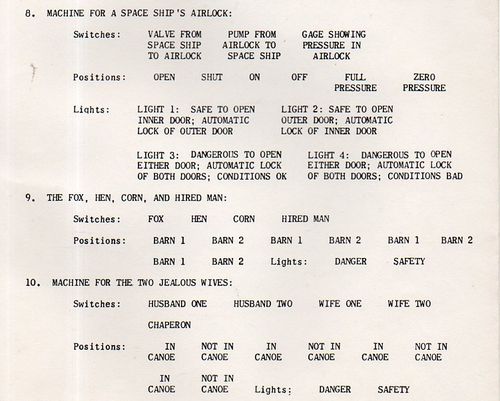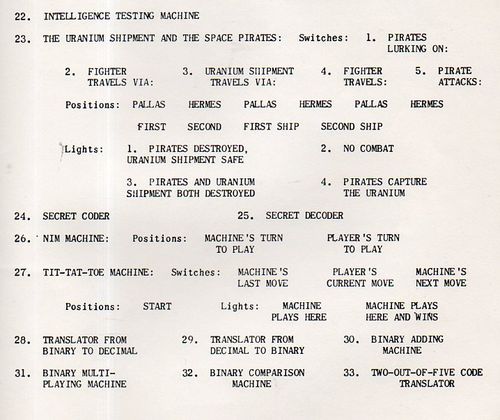JF Ptak Science Books Post 2611
When I typed "compose" for this post it meant something slightly different, especially since I was going to sub-head it with a quote about John Cage:
"HPSCHD, a piece for 7 harpsichords playing randomly-processed music by Mozart and other composers, 51 tapes of computer-generated sounds, approximately 5,000 slides of abstract designs and space exploration, and several films1."
Really? How could anything possibly go wrong here? Seriously though, I like John Cage and he gets a "pass" for all of the work that I don't get or understand. He came up when I was working on the remnants of a box that contained further remnants of an early educational electric toy/computer called the "GENIAC". This was a creation by the very versatile Edmund Berkeley and appeared first in 1955, about a decade or so after the appearance of the first "-IAC" computer, the ENIAC, a revolutionary machine begun in 1943 at the Moore School of Electrical Engineering at the University of Pennsylvania. The GENIAC (and later, the BRAINIAC) were DIYs for kids in the 1950's and 1960's, and in addition to the 100+ electrical circuits you could make there was also the possibility of making music, which puts it way out front in the history of DIY electronic sound.
But what I was going for here in the labels sheets for the GENIAC was to scrounge out some found-poetry--there really isn't any, except perhaps for the silent John Cage type, or a repetitive/cascading Steve Reich/"Come Out"2 variety found here:
"George Calling Tom, George Calling Dick, Tom Calling George, Tom Calling Dick, Dick Calling George, Dick Calling Tom."
Overall there may be some found-poetry, just in the variations of classifications of the labels that your were supposed to cut out. On page one we have labels for "the hall light", "the porch light", "the burglar alarm", "the automatic oil furnace".
Things get more interesting on the back of the first page, as we move from the mundane to the not-so:
"Private signalling channels", "machine for a space ship's airlock", "the fox, hen, corn, and the hired man, and then "machine for two jealous wives".
That was certainly different from the obverse.
Things get more interesting still on page three:
At the end of the day, I think there is only scant poetry, and that is found in the structure of the label sheet--that said, I think the whole thing taken together is a Visual Thing itself, because the four page booklet (11x8.5"/page) is actually (anopithsographically (!)) printed on one sheet on paper and on one side only, so the effect is seeing this on a 11x34" sheet of paper with all of these seemingly-disparate bits on it, which is pretty cool.
Notes:
1."Computer-Based Algorithmic Composition", Michael Edwards , Communications of the ACM, Vol. 54 No. 7, Pages 58-67 http://cacm.acm.org/magazines/2011/7/109891-algorithmic-composition/fulltext
2. If you don't want to hear the whole thing (few will) but want to hear the effect, start at the beginning for 15 seconds, then advance a minute, then another, and so on.




Comments